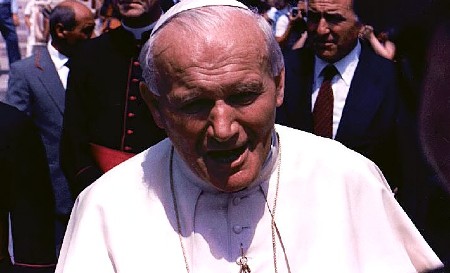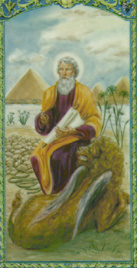 Hi readers, it seems you use Catholic Online a lot; that's great! It's a little awkward to ask, but we need your help. If you have already donated, we sincerely thank you. We're not salespeople, but we depend on donations averaging $14.76 and fewer than 1% of readers give. If you donate just $5.00, the price of your coffee, Catholic Online School could keep thriving. Thank you. Help Now >
Hi readers, it seems you use Catholic Online a lot; that's great! It's a little awkward to ask, but we need your help. If you have already donated, we sincerely thank you. We're not salespeople, but we depend on donations averaging $14.76 and fewer than 1% of readers give. If you donate just $5.00, the price of your coffee, Catholic Online School could keep thriving. Thank you. Help Now >
Monastery of Weissenau
FREE Catholic Classes
(Originally OWE_AUGIA, then MINDERLAU-AUGIA MINOR, and finally WEISSEN AU-AUGIA ALBA or CANDIDA).
A suppressed Premonstratensian house near Ravensburg in Wurtemberg, founded in 1145 by Gebizo of Ravensburg, a Guelphic ministerial, and his sister Luitgarde. Its first monks and their provost Herman (1145-75) came from the monastery of Rot (Monchsrot), near Memmingen. The monastery was completed in 1156, and in 1172 the church was dedicated to Our Lady and St. Peter by Bishop Otto of Constance, to whose diocese it then belonged. The number of canons at Weissenau increased so rapidly that in 1183 the newly founded monastery of Schussenried was recruited from there. In 1257 Weissenau was raised to the rank of an abbey, with Henry I (1257- 66) as its first abbot. From the time of its foundation in 1145 till its secularization in 1802, Weissenau continued uninterruptedly as a Premonstratensian monastery. During the first few years of its existence it had a nunnery attached, but this was transferred to the neighbouring Weissenthal by Provost Herman and existed there until the fifteenth century. In the thirteenth and fourteenth centuries Weissenau was repeatedly pillaged by feudatories and passing military troops; its most severe trial came during the Peasants' War, when the canons were temporarily driven from the monastery and the abbot, Jacob Murer (1523-33), replaced by the peasant, Johann Wetzel. Abbot Leopold Mauch (1704-22) began the rebuilding of the monastery in 1708 and of the church in 1717. The church, which is in the Barocco style, was completed in 1724 by his successor, Michael Helmling (1722-4), and the monastery by Anton Unold (1724-65). In all, Weissenau had eight provosts and forty-one abbots. Its last abbot, Bonaventure Brem (1794-1802), died on 4 August, 1818. At the time of its secularization (1802) it had twenty-seven canons, who administered the parishes of Weissenau, St. Jodock, Bodnegg, Grunkraut, Thaldorf, St. Christian, Gornhofen, Obereschach, and Obereisenbach. Its possessions comprised 198 estates and its jurisdiction extended over 137 villages. After its secularization it became the property of the Count of Sternberg-Manderscheid, upon whose death it was bought back by the Government of Wurtemberg in 1835, but resold and turned into a dressmaking and bleaching concern. Since 1892 the buildings are used as an asylum for the insane.
Weissenau acquired considerable fame on account of the reputed relic of the Precious Blood which it received from Rudolph of Habsburg in 1283. Up to 1783 the famous Blutritt , similar to that of the neighbouring monastery of Weingarten, took place every year. It consisted in a solemn procession during which the relic was borne by a priest on horseback, accompanied by many other riders and a large crowd of people. The relic is still preserved in the old abbey church, which now serves as the parish church of Weissenau. References to this relic is made in "Lohengrin" (ed. Görres, p. 84).
We ask you, humbly: don't scroll away.
Hi readers, it seems you use Catholic Online a lot; that's great! It's a little awkward to ask, but we need your help. If you have already donated, we sincerely thank you. We're not salespeople, but we depend on donations averaging $14.76 and fewer than 1% of readers give. If you donate just $5.00, the price of your coffee, Catholic Online School could keep thriving. Thank you.Help Now >








 Daily Readings for Thursday, April 25, 2024
Daily Readings for Thursday, April 25, 2024 St. Mark: Saint of the Day for Thursday, April 25, 2024
St. Mark: Saint of the Day for Thursday, April 25, 2024 Prayer for Policemen: Prayer of the Day for Thursday, April 25, 2024
Prayer for Policemen: Prayer of the Day for Thursday, April 25, 2024


